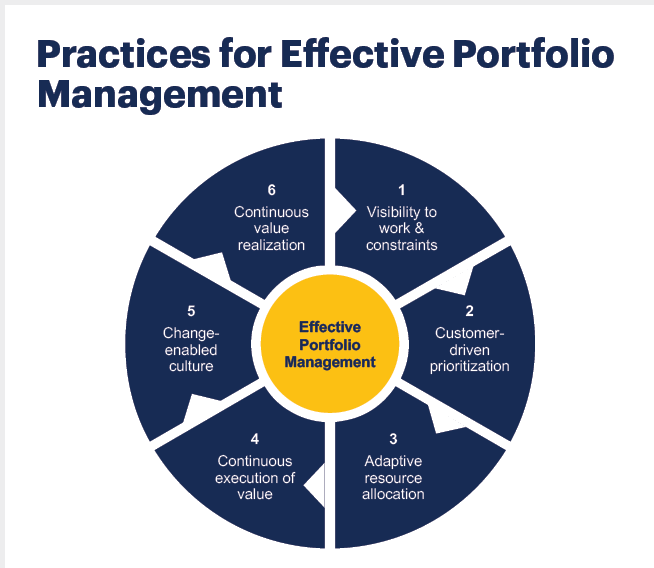PMO and Portfolio Management: Aligning Projects with Organizational Goals
Introduction
In today’s rapidly evolving business landscape, organizations face the constant challenge of achieving their strategic goals while effectively managing multiple projects. This is where the Project Management Office (PMO) and Portfolio Management come into play. By aligning projects with organizational goals, these practices ensure that resources are allocated wisely, risks are mitigated, and desired outcomes are achieved. In this blog post, we will explore the importance of PMO and Portfolio Management in driving organizational success.
The Role of PMO
A Project Management Office acts as a centralized hub that oversees all projects within an organization. It provides guidance, standards, and support to project teams, ensuring consistent project management practices are followed. The PMO is responsible for establishing project governance, defining project management methodologies, and monitoring project performance.
Strategic Alignment
One of the primary functions of a PMO is to ensure alignment between projects and the organization’s strategic goals. By working closely with senior management, the PMO helps translate strategic objectives into actionable projects. It identifies project priorities, assesses their potential impact, and aligns project outcomes with the organization’s long-term vision.
Resource Optimization
The PMO plays a crucial role in resource allocation and optimization. It assesses the availability and capacity of resources across projects, avoiding resource conflicts and ensuring that the right resources are assigned to the right projects. By maintaining a holistic view of resource utilization, the PMO can identify bottlenecks, redistribute resources, and enhance project efficiency.
Standardized Processes
Consistency is key in project management. The PMO establishes and maintains standardized project management processes, methodologies, and templates. This consistency ensures that projects are executed in a structured manner, reducing the likelihood of errors and enhancing collaboration across project teams. Standardized processes also enable knowledge sharing and facilitate the reuse of successful practices and lessons learned.
The Importance of Portfolio Management
While the PMO focuses on individual projects, Portfolio Management takes a broader perspective by considering the organization’s entire project portfolio. It involves the selection, prioritization, and oversight of projects to ensure optimal resource allocation and alignment with organizational goals.
Strategic Alignment
Portfolio Management ensures that the project portfolio as a whole aligns with the organization’s strategic objectives. It involves evaluating potential projects based on their strategic fit, value, and anticipated benefits. By actively managing the portfolio, organizations can make informed decisions about project selection, termination, or reprioritization to maximize the overall value delivered.
Risk Management
An effective Portfolio Management process considers and manages risks at the portfolio level. By diversifying the project portfolio across different risk profiles, organizations can mitigate the impact of any individual project failure. Regular portfolio reviews and risk assessments enable proactive identification of potential risks, allowing organizations to take corrective actions and maintain overall project success.
Resource Optimization
Portfolio Management enables organizations to optimize the allocation of scarce resources across the project portfolio. By assessing the resource requirements and availability across projects, it helps balance resource utilization and avoid overburdening key resources. This resource optimization improves project success rates and reduces the likelihood of project delays or failures due to resource constraints.
Portfolio Management in aligning projects with organizational goals
- Decision-making and Governance: The PMO and Portfolio Management establish governance structures and decision-making processes that enable effective project selection and oversight. By defining clear criteria and evaluation methods, they ensure that projects are aligned with the organization’s strategic priorities. This structured approach enables informed decision-making, minimizes project failures, and maximizes the return on investment.
- Continuous Improvement: PMO and Portfolio Management practices facilitate continuous improvement by capturing and analyzing project data and metrics. They enable organizations to learn from past experiences, identify areas for improvement, and implement lessons learned in future projects. By fostering a culture of continuous improvement, organizations can enhance project outcomes and increase efficiency.
- Stakeholder Management: PMO and Portfolio Management consider the needs and expectations of various stakeholders, both internal and external. They facilitate effective communication and engagement with stakeholders throughout the project lifecycle. By ensuring that stakeholders are involved, informed, and satisfied, PMO and Portfolio Management contribute to successful project delivery and stakeholder satisfaction.
- Adaptability and Flexibility: In today’s rapidly changing business environment, organizations must be agile and adaptable. PMO and Portfolio Management practices help organizations assess the impact of external factors, such as market trends, regulatory changes, and technological advancements, on their project portfolio. They enable organizations to adjust project priorities, reallocate resources, and pivot strategies to align with changing business conditions.
- Benefits Realization: PMO and Portfolio Management focus not only on project delivery but also on benefits realization. They ensure that projects are designed and executed with the end goal in mind, driving value creation for the organization. Through careful monitoring and evaluation of project outcomes, PMO and Portfolio Management enable organizations to track and measure the achievement of intended benefits.
- Risk Mitigation: Risk management is a critical aspect of both PMO and Portfolio Management. They identify, assess, and manage risks associated with projects and the project portfolio. By proactively addressing risks, organizations can minimize potential negative impacts on project delivery and overall organizational performance.
Conclusion
In today’s dynamic business environment, organizations must align their projects with their strategic goals to stay competitive and achieve success. The Project Management Office and Portfolio Management practices play pivotal roles in ensuring this alignment. The PMO provides guidance and support at the project level, ensuring consistency and maximizing project success. Portfolio Management takes a broader perspective, aligning the project portfolio with the organization’s strategic vision and optimizing resource allocation.
By leveraging the power of PMO and Portfolio Management, organizations can enhance project outcomes, reduce risks, and drive overall organizational success. Embracing these practices enables effective project execution, fosters innovation, and positions organizations for long-term growth in an ever-changing business landscape.

